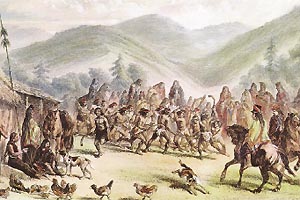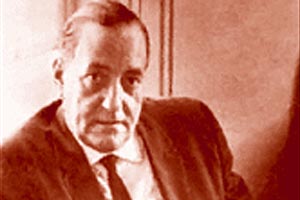Juan Lorenzo Colipi was the son of Lorenzo Colipi, who was said to be the most powerful cacique of the abanijos, the most numerous mapuche group of the XIX century. They took up the foothills of the Nahuelbuta mountain range (Traiguen, Lumaco, Los Sauces, Puren and Chol-Chol).
Juan Lorenzo Colipi was born in 1818 and although he remained in Puren during his childhood, he spent most of his time in military forts with soldiers. This is how on January 13th, 1835, he entered the Valdivia Battalion. He participated in the war against the Peruvian-Bolivian Confederacy (1836-39) as a member of the Carampangue Battalion. In this conflict, his most important performances were at the battle of Buin bridge (January 6th, 1839) and the battle of Llaclla bridge (December 17th, 1838).
At this last battle, Colipi and only 11 men fought highly superior opposing forces, having to later retreat carrying a wounded man on his shoulders. The defense of the bridge allowed saving one of the divisions of Chilean troops at one of the most critical moments of the war.
At the end of the conflict, as a reward for his heroics he obtained the rank of captain.
He died from natural causes in Santiago, on november 19th, 1839.
Venancio Coñoepan, the original and his descendents
Venancio Coñoepan, cacique of the Coñoepan clan and also a member of the abajinos, dominated the entire zone between Lumaco and Chol Chol.
He allied himself with the patriots in their struggle against the royalist, and just like Colipi, he had a good relationship with the governments after independence was declared. However, around 1820 he went to live in Argentina, where he died fighting the pampa Indians. His story was picked up by Vicuña Mackenna in his work La Guerra a Muerte (The War to the Death).
In Chile, his brother Callfupan had a son which he also named Venacio Coñoepan, who established an alliance with the army, also participating in the founding of Temuco (February 24th, 1881).
He was named the main cacique of the Araucania pacification period by the mapuches. Later, another relative of the same name led one of the largest and most important indigenous integration movements the country has ever had.
In the XX century there lived another Venacio Coñoepan who became deputy between 1945 and 1953 and again from 1965 to 1969, as well as minister of Land and Colonization during Carlos Ibañez del Campo’s second government (1952-58). He was also an advisor for the Banco del Estado (State Bank) during Jorge Alessandri Rodriguez’s presidency (1958-64). In 1965 he was elected deputy once again; however, he died on May 1st, 1968, unable to conclude his parliamentary term.





 Muere Alejo Carpentier
Muere Alejo Carpentier